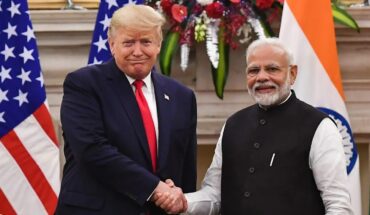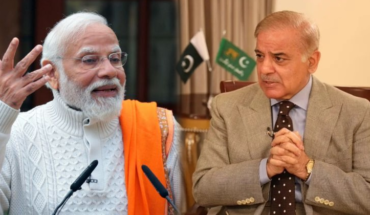
Dr. Anil Kumar Angrish

Anil Reddy Sanikommu
On introduction of Special Economic Zones (SEZs) in India, it was feared that these SEZs may become Special Eviction Zones or Special Exploitation Zones. It was due to concerns regarding acquisition of land for SEZs and resultant displacement of people, and concerns regarding exploitation of labour in units set up in SEZs due to interpretation of the word – ‘foreign territory’ while describing SEZ. Special Economic Zone (SEZ) is considered a specially delineated duty-free enclave, deemed to be foreign territory for the purposes of trade operations, duties and tariffs. SEZ Act exempted businesses in SEZ from the payment of taxes, duties, or cess under 20+ enactments.
The SEZ policy was introduced in April 2000, and the Special Economic Zones Act, 2005 got assent of the President on June 23, 2005. But the concept was not new to India as the genesis of SEZs in India can be traced to the establishment of Export Promotion Zones (EPZs). The first such EPZ was set up in Gujarat as Kandla Free Trade Zone (KFTZ) in 1965. After almost a quarter of century, it becomes pertinent to evaluate the SEZ policy. Certain goals were declared economic goals of SEZs which included boosting exports, drawing in investments, and producing jobs.
Number of notified SEZs is 375 as compared to number of formal approvals for SEZs which is 423. Number of operational SEZs (280) forms just 66% of formally approved SEZs, and about 75% of notified SEZs. Concentration of SEZs in select states remains a major concern. 84 per cent of notified SEZs are located in India’s eight states namely Andhra Pradesh, Gujarat, Karnataka, Maharashtra, Tamil Nadu, Telangana, and Uttar Pradesh. As of March 2024, 60% of all formal permissions, 64% of notified SEZs, and about 68% of Operational SEZs are located in just five states namely Tamil Nadu (51 in total), Maharashtra (38 in total), Telangana (38), Karnataka (37), and Andhra Pradesh (25).
Exports from the Operational SEZs have gone up substantially. In 2005-2006, exports stood at Rs. 22,840 Cr. (US$ 5.16 bn). Exports from SEZs touched a new level of Rs. 220,711 Cr. ($46.52 bn) in 2009-2010 as compared to Rs. 99,689 ($21.68 bn) in 2008-09. In 2010-11, exports stood at Rs. 315,868 ($69.33 bn). In 2016-17, exports from SEZs scaled a new high of Rs. 523,637 ($78.07 bn). In last five years, the growth of exports has remained positive except for 2020-21 which was not a normal year.
Table 1: SEZ Exports in last Five Years
| FY | Value in US $ (Bn) | Value in Rs. (Cr.) |
| 2023-24 | 163.69 | 13,55,220 |
| 2022-23 | 157.24 | 12,63,578 |
| 2021-22 | 133.00 | 9,90,747 |
| 2020-21 | 102.32 | 7,59,524 |
| 2019-20 | 112.37 | 7,96,669 |
Source: Department of Commerce, Statement of Activities Report 2023-24 (p.96-97); https://www.sezindia.gov.in
Exports from SEZs form substantial part of total exports from India. From 2010-11 to 2023-24, exports from SEZs remained between 16.0% and 21.5% of total exports from India. In 2023-24, overall exports from India reached $778.2 bn comprising merchandise exports of $437.1 bn and services exports of $341.1 bn. Hence, SEZ exports formed 21.03% of total exports from India.
In addition to contribution towards exports, total investment in SEZs is another major parameter to evaluate effectiveness of SEZs. As of February 2006, investment in Central Government SEZs and State/Private SEZs set up before 2006 stood at Rs. 4,035.51 Crore. As on September 30, 2023, investment in Central Government SEZs, State/Private SEZs set up before 2006, and SEZs notified under the Act stood at Rs. 30,344 Cr, Rs. 13,122 Cr, and Rs. 626,514 Cr. respectively. Hence, total investment in SEZs went up from Rs. 4,035.51 Cr in February 2006 to Rs. 669,980 Cr by September 30, 2023 thereby generating an incremental investment of Rs. 665,944.49 Cr. It is worthwhile to note that the SEZ policy was introduced in April 2000, and the Parliament passed the SEZ Act in 2005, and the President signed it into law on June 23, 2005. The SEZ Rules came into force on February 10, 2006. Due to this, SEZs notified under the Act are being classified separately. Further, as opposed to their international counterparts, SEZs in India can be developed by the government, or by private sector, as well as in the joint sector.
SEZs have created employment opportunities as in 2006, cumulative employment opportunities generated by SEZs stood at 134,704 and total employment number was 29,84,677 persons by September 30, 2023. Table 2 provides employment related details by different categories of SEZs. These figures on employment generation are apart from millions of man days of employment generated by the developers for infrastructure activities. In short, through SEZs, incremental employment opportunities have been generated to the tune of 28,49,973 jobs after 2006.
Table 2: Total Employment generated by SEZs
| SEZs | Employment as of Feb. 2006 | Incremental Employment | Total Employment as on Sept. 30, 2023 |
| Central Government SEZs | 1,22,236 | 73,748 | 1,95,984 |
| State/Private SEZs set up before 2006 | 12,468 | 1,06,283 | 1,18,751 |
| SEZs notified under the SEZ Act | N.A. | 26,69,942 | 26,69,942 |
| Total | 1,34,704 | 28,49,973 | 29,84,677 |
Source: Compiled from Statement of Activities 2023-24, Department of Commerce, Ministry of Commerce & Industry, Government of India.
In terms of employment opportunities generated by December 15, 2023, SEZs in Tamil Nadu employed 5,91,517 persons followed by Maharashtra (5,89,811), Telangana (5,00,415), Karnataka (4,01,232), and Uttar Pradesh (1,84,871). In other words, 78.32% of total employment was generated by SEZs present in just five states. Here, a number of factors play an important role, e.g., industrial base & infrastructure. For example, states with mature industrial bases such as Maharashtra and Karnataka have edge as these states have robust infrastructure, trained manpower and favourable policies in place. Other factors such as sectoral focus, state policies & incentives, urbanization in the state, etc also exercise influence. It is particularly true for IT/ITeS SEZs in Karnataka and Telangana.
It is evident that SEZs have contributed in terms of exports, employment generation, and investment. In recent years, certain concerns have been expressed which need attention so as revive SEZs in India. Due to the Sunset Clause setting in on Income Tax exemptions for SEZ developers and units, it has been observed that investors have lost interest. A Group headed by Baba Kalyani, Chairman of Bharat Forge was formed to study the SEZ Policy in India on 04.06.2018 that submitted report in December 2018. Recommendations included framework shift from export growth to broad-based Employment and Economic Growth (Employment and Economic Enclave – 3Es), formulation of separate rules and procedures for manufacturing and service SEZs, shift from ‘supply-driven’ to ‘demand-driven’ approach, enabling framework for ‘Ease of Doing Business’, procedural relaxations for developers and tenants, promotion of MSME participation among others.
Certain important developments asked for revisiting the framework of SEZs, e.g., the World Trade Organization (WTO) Dispute Settlement Panel on October 31, 2019 had found SEZ benefits as violative of the Agreement on Subsidies & Countervailing Measures (SCM). The WTO’s Dispute Settlement Panel had deemed India’s export-related schemes, including the SEZ Scheme, inconsistent with WTO rules. Competition from member countries of the Association of Southeast Asian Nations (ASEAN) is another compelling reason. To shift the focus from “exports” to “creation of manufacturing and services hubs” which will cater to domestic market, the Development of Enterprise and Service Hubs (DESH) Bill was introduced by Finance Minister Nirmala Sitharaman in her Budget speech on February 1, 2022. The existing SEZ Act was to be replaced thereby enabling states to become partners in the Development of Enterprise and Services Hubs. But in December 2022, NITI Aayog raised objections to certain provisions of the proposed bill. In that background, there were two options, i.e., Incorporation of changes in the draft DESH Bill or the Option of bringing in the new rules through the SEZ (Amendment) Bill, 2023. Due to Lok Sabha elections, the decision got delayed.
In the first week of July 2024, certain media reports pointed out that the Commerce Ministry has sought views of different departments on proposed measures to revive SEZs and facilitate business transaction between SEZ and the domestic market. Essentially, the focus of these reports was on permitting the sale of products manufactured in SEZs in the domestic market on payment of duty foregone on inputs, need to improve the connect between SEZs and the Domestic Tariff Area (DTA), streamlining approval processes for units, easing of restrictions for units in SEZs, among others. Union Budget that is going to be presented next week is likely to bring more clarity on revival of SEZs. Players in the co-working space have expressed that their expectation is in integration of co-working spaces with SEZs as it is expected to combine the co-working sector’s agility and focus on innovation with the SEZs’ beneficial regulations for businesses. It is expected by these players that this move has potential to attract domestic as well as international companies.
In a recent article, TV Mohandas Pai proposed new SEZs, i.e., Special Employment Zones. In the backdrop of new SEZs, old SEZ must not lose relevance. Special Economic Zones have shown their relevance by generating employment, attracting investment, and contributing to exports in a significant manner.
Dr. Anil Kumar Angrish, Associate Professor (Finance and Accounting), Department of Pharmaceutical Management, NIPER, SAS Nagar (Mohali), Punjab
Anil Reddy Sanikommu, MBA (Pham.), Department of Pharmaceutical Management, NIPER, SAS Nagar (Mohali), Punjab
Disclaimer: Views are personal and do not represent the views of the Institute.






